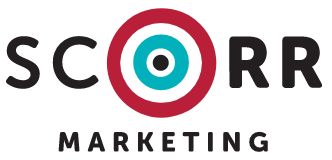News
SCORR Marketing Advice: Brand Identity

Creating a successful brand identity is a process, not a project
By Cinda Orr
Numerous businesses try, but many fail to create a successful brand identity. Often, this is because they perceive the brand as little more than a logo and tagline, when in fact those are just a small part of a much larger corporate strategy. While how the company name is visually expressed in a logo and carried throughout the communications is undeniably important, the brand itself is actually how customers perceive your company and the associations and inherent value they place on your business.
The first mistake companies often make in developing a brand identity is in not effectively identifying the favorable market position—what is it your audience wants, desires and needs? The process of identifying the target position is a mix of external and internal assessments, through a process of market research and knowing your strengths and weaknesses through a thorough, honest, and objective analysis of what you do best.
Once you have a viable brand position, you have to commit to it completely. Sometimes economic pressure or other influences cause companies to stray from established messaging and imagery, but in most cases, this does nothing but confuses your steady customers and presents an image of inconsistency and confusion.
Hand in hand with a successful brand strategy is a well-thought-out marketing plan. Brand-building is about communicating your brand promise to your audience, so it can’t take place without a thorough understanding of your audience(s) and the channels you use to reach them.
Developing an effective brand for your company is not something you do once, nor is it something that can be done overnight. It may start with a logo and tagline, but if done properly, it is an ongoing process that will ultimately impact all of your company’s operations. It’s not easy, cheap or quick, but nothing else we know of will do more to increase awareness and recognition; differentiate you from competitors; make your message meaningful and memorable; allow “premium” pricing; enhance customer loyalty; and ultimately increase sales and profits.